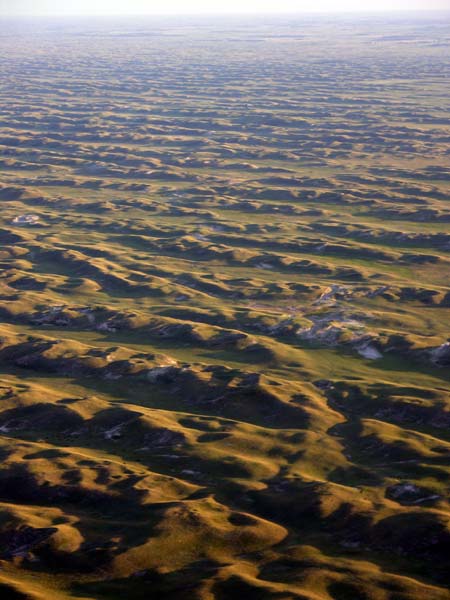History Suggests Major Wind Shift Could Again Bring Drought to Great Plains

Nebraska's Sand Hills might look like a place fit only for cattle grazing, but to geologists the expanse of grasslands hide sand dunes that contain a valuable record of ancient climate.
A crisscross pattern in the dunes serves as a record of changes in wind direction and shows that 800 to 1,000 years ago, during the Medieval Warm Period, the winds brought drought to that region, according to a new study.
In the spring and summer, during the growing season, southerly winds from the Gulf of Mexico bring moisture and rainfall up to the open expanse of prairie east of the Rocky Mountains, an area known as the Great Plains.
Today, the net force of southerly summer winds combined with northerly winds of winter would push the sand dunes to migrate in a southeastern direction. But the dunes don't move because they are stabilized by vegetation.
Back during the Medieval Warm Period, the dunes were not vegetated and were free to move.
The direction that the dunes moved back then, recorded in their crisscross pattern, is a result of the net force of the winds during that time. Assuming that winter winds came from the north like today, scientists were able to figure out which direction the spring and summer winds came from.
Their analysis found that spring and summer winds back then did not come from the Gulf of Mexico but instead blew from the Southwest. These warm and dry winds likely caused the drought conditions that had previously been documented for the region back then, explained study co-author David Loope of the University of Nebraska.
Sign up for the Live Science daily newsletter now
Get the world’s most fascinating discoveries delivered straight to your inbox.
And what if a similar shift occurred today?
"This argues for a conservative position of water resources, because there's a possibility of a super drought," Loope told LiveScience. "Being more conservative would be the lesson here."
The study is detailed in the July 21 issue of the journal Science.











